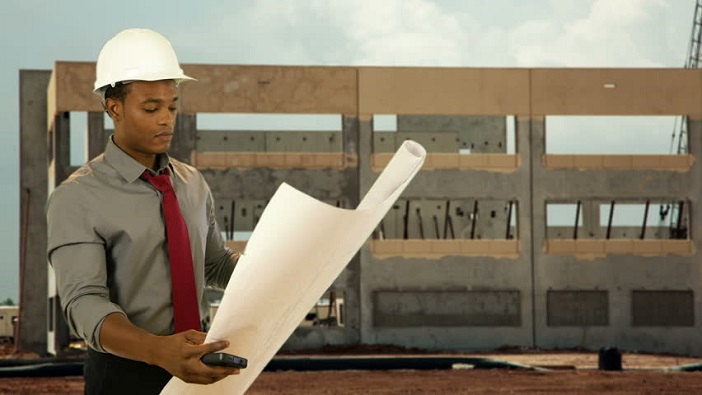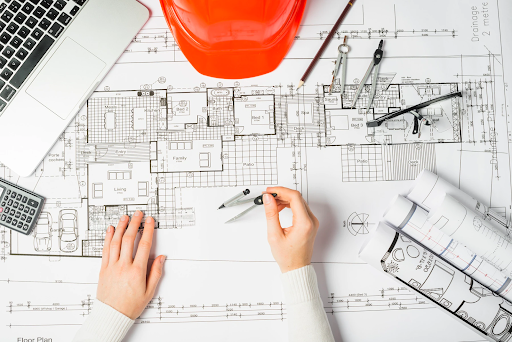Architect Salary Breakdown by Region and Seniority
Architect Salary Breakdown by Region and Seniority
Blog Article
Comprehending the Diverse Profession Paths Available for Aspiring Architect
As an ambitious Architect, you have a world of career paths waiting for you. Whether you're attracted to traditional design or the subtleties of sustainable design, there's a specific niche that lines up with your passions.
Traditional Architecture: Designing Buildings and Structures
Traditional style concentrates on designing structures and structures that blend functionality with visual appeal. Your layouts can show social heritage, showcasing neighborhood customs while satisfying modern-day demands.
You'll create skills in composing, model-making, and website evaluation, allowing you to envision and interact your ideas effectively. Engaging with customers, you'll need to understand their vision and equate it into practical designs.
Moreover, constructing codes and sustainability practices are essential in your job, guaranteeing your structures are secure and eco friendly. As you grow in your occupation, you'll locate chances in residential, business, and even restoration projects, each offering one-of-a-kind obstacles. Accepting standard architecture leads the way for a satisfying occupation that pays homage to the past while shaping the future.
Urban Preparation: Forming Communities and Public Spaces
As an ambitious Architect, you can play a crucial duty as a metropolitan organizer, changing exactly how areas operate and engage. By employing neighborhood engagement strategies, you'll assure that homeowners have a voice fit their setting. Plus, incorporating sustainable style concepts will certainly help produce rooms that not just meet today's requirements yet likewise safeguard the future.
Function of Urban Planners
While numerous might consider engineers as the sole visionaries behind buildings, urban planners play a crucial duty in forming the wider landscape of neighborhoods and public spaces. They evaluate land usage, zoning regulations, and neighborhood needs to develop sustainable environments that boost high quality of life. By teaming up with various stakeholders, you'll help make parks, transportation systems, and houses that promote social communication and accessibility. Urban organizers likewise concentrate on environmental factors to consider, making certain that growths integrate green rooms and assistance biodiversity. Your expertise in spatial layout and neighborhood dynamics enables you to visualize future development while maintaining cultural heritage. In this important function, you'll directly affect just how people experience their environments, making every project an opportunity for favorable adjustment.
Community Engagement Strategies
Reliable area interaction methods are crucial for metropolitan planners to guarantee that the voices of residents are listened to and valued in the preparation process. To foster significant discussion, you must prioritize open forums and workshops where community participants can share their ideas and problems. Use surveys and social media to get to a more comprehensive target market, ensuring diverse perspectives are consisted of. Working together with local organizations can enhance count on and promote much deeper links. It is very important to offer clear details concerning decision-making procedures and proposed tasks, enabling homeowners to feel informed and equipped. By proactively integrating and listening responses, you'll develop areas that show the neighborhood's demands, eventually causing even more sustainable and effective urban atmospheres. Embrace openness and constant dialogue for long-term effect.
Sustainable Style Concepts
When creating urban rooms, integrating lasting design concepts is crucial for creating environments that thrive both ecologically and socially. Consider integrating green spaces, like gardens and parks, to enhance biodiversity and enhance air top quality.
Designing with water conservation in mind is additionally key-- think of rainfall gardens and permeable surfaces to handle stormwater. Involving area members throughout the planning process guarantees that the spaces you produce fulfill their needs and encourage social interaction. By welcoming these principles, you'll add to vibrant, sustainable urban landscapes that profit everyone.

Landscape Architecture: Producing Lasting Exterior Settings
As you explore landscape architecture, you'll uncover essential layout concepts that produce functional and gorgeous outside areas. Sustainable practices play a vital duty in guaranteeing these atmospheres flourish while minimizing ecological effect. Plus, you'll locate a variety of profession possibilities that enable you to make a real distinction in just how individuals engage with nature.
Design Concepts in Landscape
Understanding layout principles in landscape design is essential for creating lasting outdoor environments that harmonize with nature. You'll require to contemplate elements like equilibrium, range, and percentage to ensure your designs really feel natural and welcoming. Including indigenous plants not only improves biodiversity but additionally lowers water use, making your landscape durable. Consider the circulation of area and just how individuals engage with it; paths and seating areas must invite exploration and leisure. In addition, focus on seasonal changes, making with products that enhance the environments year-round (Architect). By prioritizing sustainability and aesthetics, you can develop exterior rooms that enhance the area and promote health. Embracing these principles will certainly set a strong structure for your occupation in landscape architecture.
Lasting Practices Introduction
Sustainable methods in landscape design not just concentrate on looks however this content additionally prioritize eco-friendly wellness and source preservation. You can develop spaces that advertise soil wellness, such as exercising and using natural materials permaculture principles. Eventually, these practices assure your designs profit both people and the atmosphere for years to come.
Profession Opportunities Exploration
With a strong foundation in sustainable techniques, landscape architecture uses a range of occupation paths that allow you to make a purposeful influence on the environment. You might work as a landscape developer, developing visually pleasing and useful outside areas, or focus on eco-friendly repair, assisting to restore damaged ecological communities. Urban planners often collaborate with landscape designers to develop environment-friendly areas in urban settings, improving city livability. If you're enthusiastic concerning education and learning, think about coming to be a landscape style educator, inspiring future generations. Furthermore, you might deal with nonprofits focused on environmental sustainability or participate in study to introduce new methods. Each path not only forms attractive settings but likewise fosters a much healthier planet for future generations.
Sustainable Layout: Concentrating on Eco-Friendly Practices
As you discover your occupation in design, welcoming environmentally friendly practices can establish you apart in an affordable field. Lasting style concentrates on creating buildings that lessen ecological impact while enhancing passenger well-being. By integrating renewable products, energy-efficient systems, and sustainable building strategies, you'll add to a greener future.
Beginning by gaining expertise of green qualifications like LEED or BREEAM, which can boost your credentials. Take into consideration just how all-natural light, ventilation, and thermal efficiency can maximize style. Work together with designers and environmental specialists to introduce remedies that reduce waste and save resources.
Don't fail to remember the significance of area involvement-- interesting local stakeholders can motivate styles that harmonize with the setting. As customers progressively focus on sustainability, your competence in eco-friendly practices will certainly not only bring in jobs however likewise meet your passion for responsible architecture. Welcome this critical element of the profession, and watch your occupation prosper.
Historic Conservation: Protecting and Restoring Social Heritage
While you commence on your building journey, think about the necessary function of historical preservation in maintaining our cultural heritage. This area focuses on the security and restoration of considerable structures, websites, and structures that inform the tales of our past. By taking part in historical preservation, you'll assist guard the building tradition that forms area identity.
As a historical conservation Architect, you'll assess historic importance and analyze the problem of frameworks. You'll work closely with chroniclers and preservationists to assure genuine reconstruction strategies are employed. This job path allows you to blend creative thinking with research, enabling you to design services that appreciate initial materials and craftsmanship.
Your work not just adds to sustainability by reusing existing buildings yet likewise cultivates a sense of pride within communities. Embracing this path will aid you become a guardian of history, protecting the stories and aesthetic appeals that enhance our lives.
Interior Design: Enhancing Indoor Spaces
Historic conservation and interior design both share a dedication to boosting the constructed environment, yet they concentrate on different aspects. While historical conservation highlights maintaining a structure's historical and cultural worth, indoor architecture nos in on optimizing indoor rooms for capability and appearances.
As an aspiring Architect, you'll discover that interior architecture allows you to mix imagination with technical abilities. You'll design areas that not only look excellent but also promote comfort and efficiency. This field entails recognizing just how light, color, and materials engage within a room, influencing state of mind and functionality.
You'll function on different projects, from property homes to industrial offices, making sure that each atmosphere fulfills the requirements of its occupants. By focusing on individual experience, you can change insides right into motivating and practical spaces, making a significant effect on just how people communicate with their surroundings. Welcome the opportunity to enhance indoor settings and form the method people work and live.
Industrial Style: Combining Capability With Appearances
Industrial layout plays a necessary role in creating products that seamlessly mix appearances with functionality, making certain that what you make use of daily is not only visually appealing however also practical. As an aspiring Architect, you could involve yourself in this field, concentrating on developing everything from furnishings to customer electronic devices. Your work includes comprehending user requirements, products, and manufacturing procedures, allowing you to create pop over to this web-site ingenious remedies that improve daily experiences.
In commercial design, you'll usually team up with marketing professionals, designers, and producers, ensuring that your designs are not only beautiful but also feasible. This profession course offers a dynamic atmosphere where imagination meets usefulness, making it a rewarding option for designers interested in shaping the items of tomorrow.
Often Asked Concerns
What Educational Accreditations Do I Required to End Up Being an Engineer?
To come to be a designer, you'll need an expert level in design, commonly a Bachelor's or Master's. Furthermore, you'll need to complete a teaching fellowship and pass the Architect Registration Examination to practice legitimately.
Are There Certification Requirements for Different Architectural Career Paths?
Yes, there're accreditation needs for numerous building courses. Architect. You'll need to pass exams, complete teaching fellowships, and occasionally pursue specialized training, relying on your chosen emphasis, like landscape architecture, urban design, or historical conservation
What Software Application Abilities Are Vital for Architects Today?

How Can I Gain Practical Experience While Examining Style?
You can obtain useful experience by interning at building companies, taking part in style competitors, offering for area tasks, or collaborating with classmates on real-world tasks. These possibilities improve your abilities and construct valuable links in the market.
What Job Opportunities Exist Outside Traditional Design Firms?
You can explore numerous job opportunities outside standard design firms, like urban planning, interior design, landscape design, construction administration, genuine estate advancement, or perhaps functions in sustainability consulting. Each deals special obstacles and benefits.
Whether you're drawn to conventional architecture or the nuances of lasting layout, there's a specific niche that straightens with your interests.When creating urban spaces, integrating sustainable style concepts is vital for creating atmospheres that grow both ecologically and socially.As you explore landscape architecture, you'll uncover important style principles that develop functional and lovely exterior rooms.Understanding design principles in landscape style is important for developing lasting exterior environments that harmonize with nature.In commercial layout, you'll frequently collaborate with online marketers, designers, and suppliers, ensuring that your styles are not just attractive but also viable.
Report this page